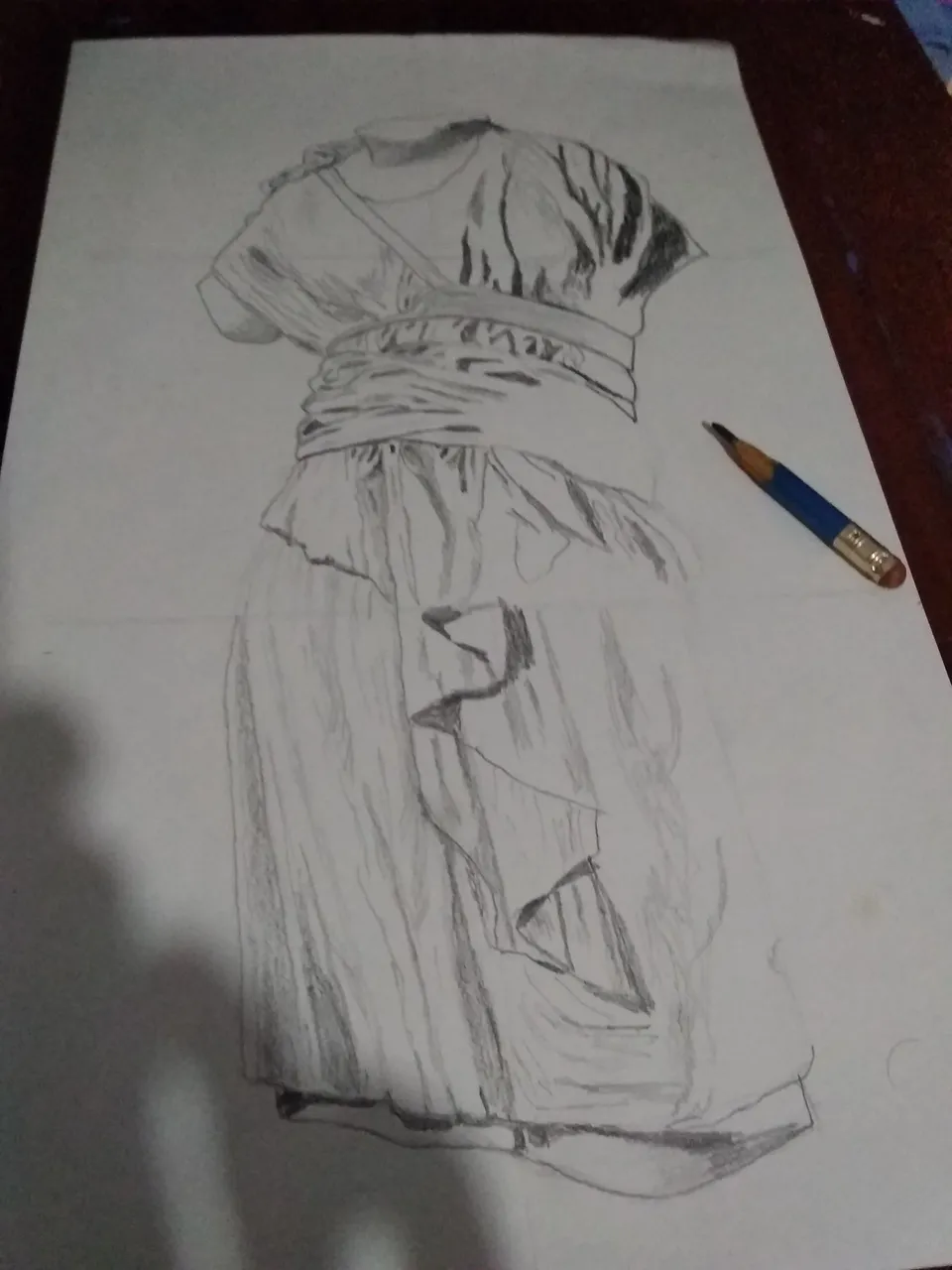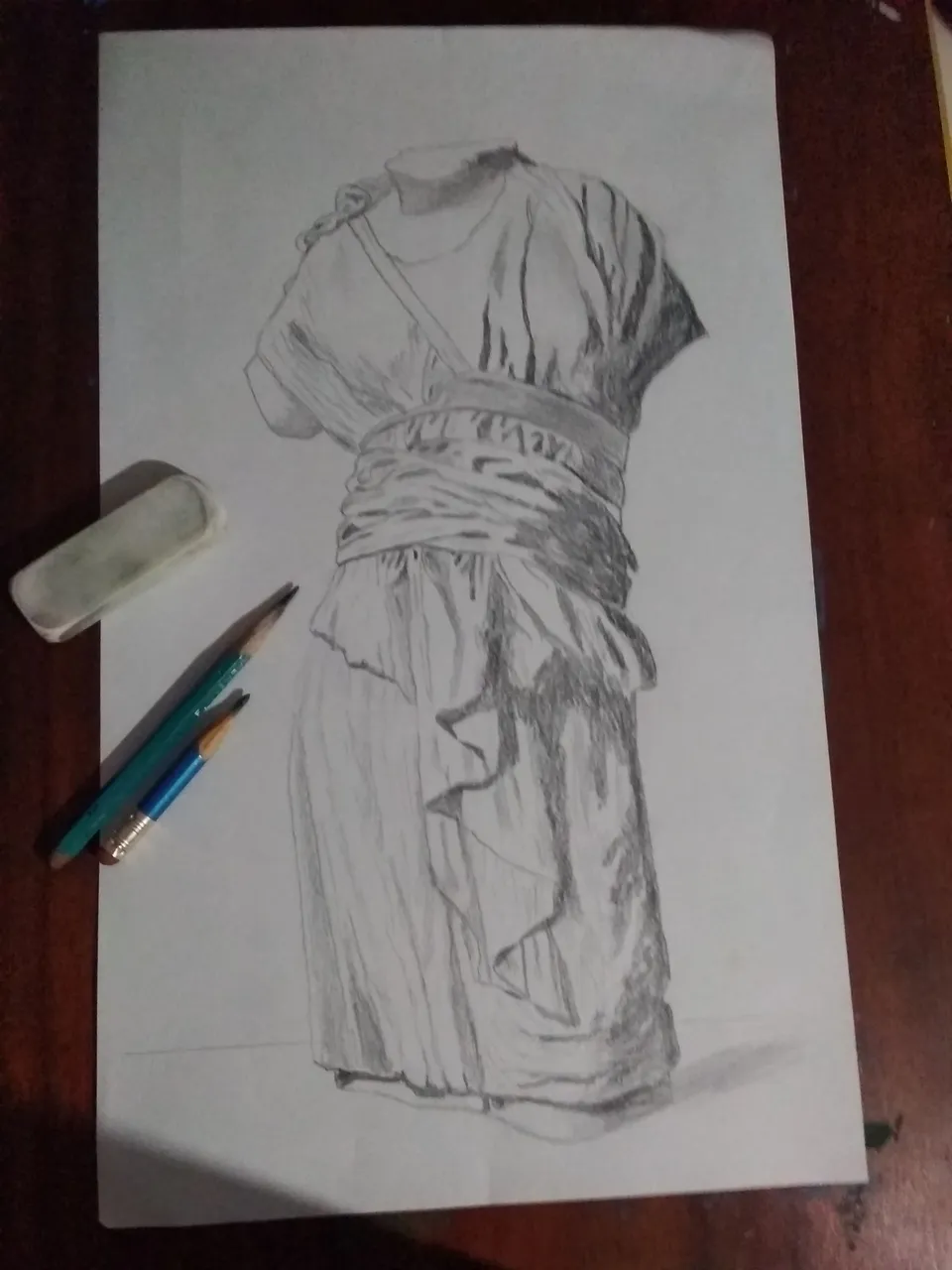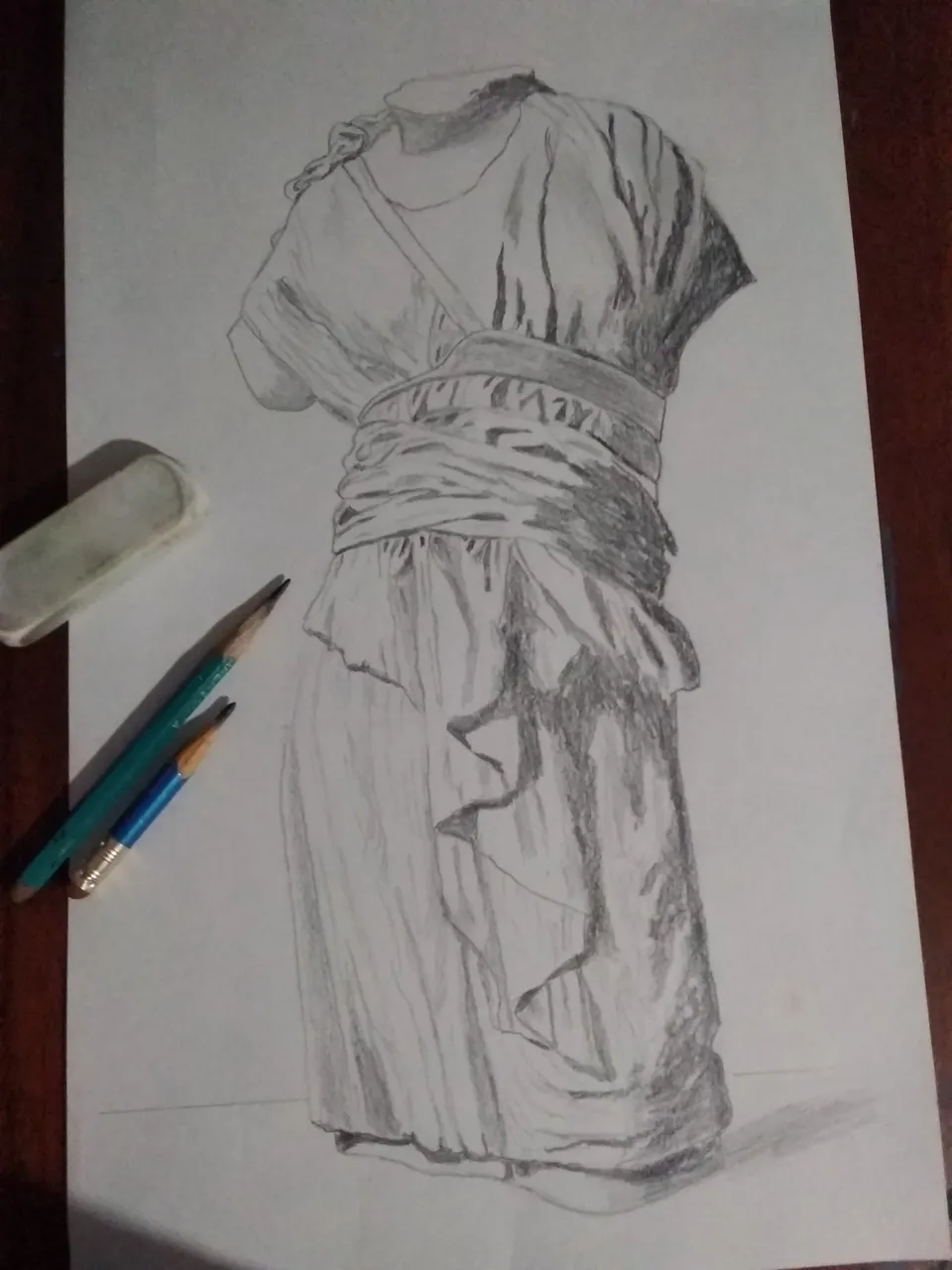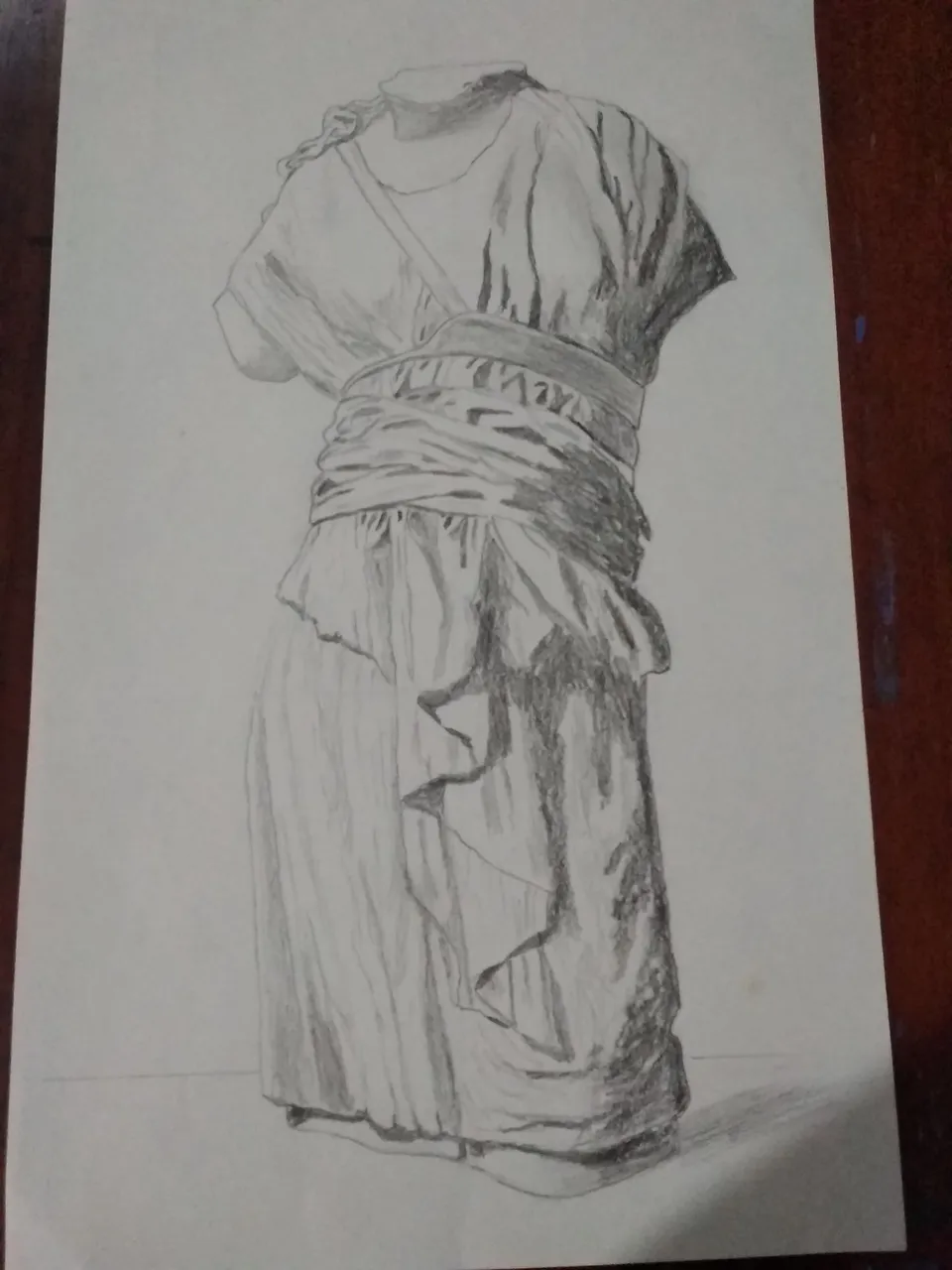
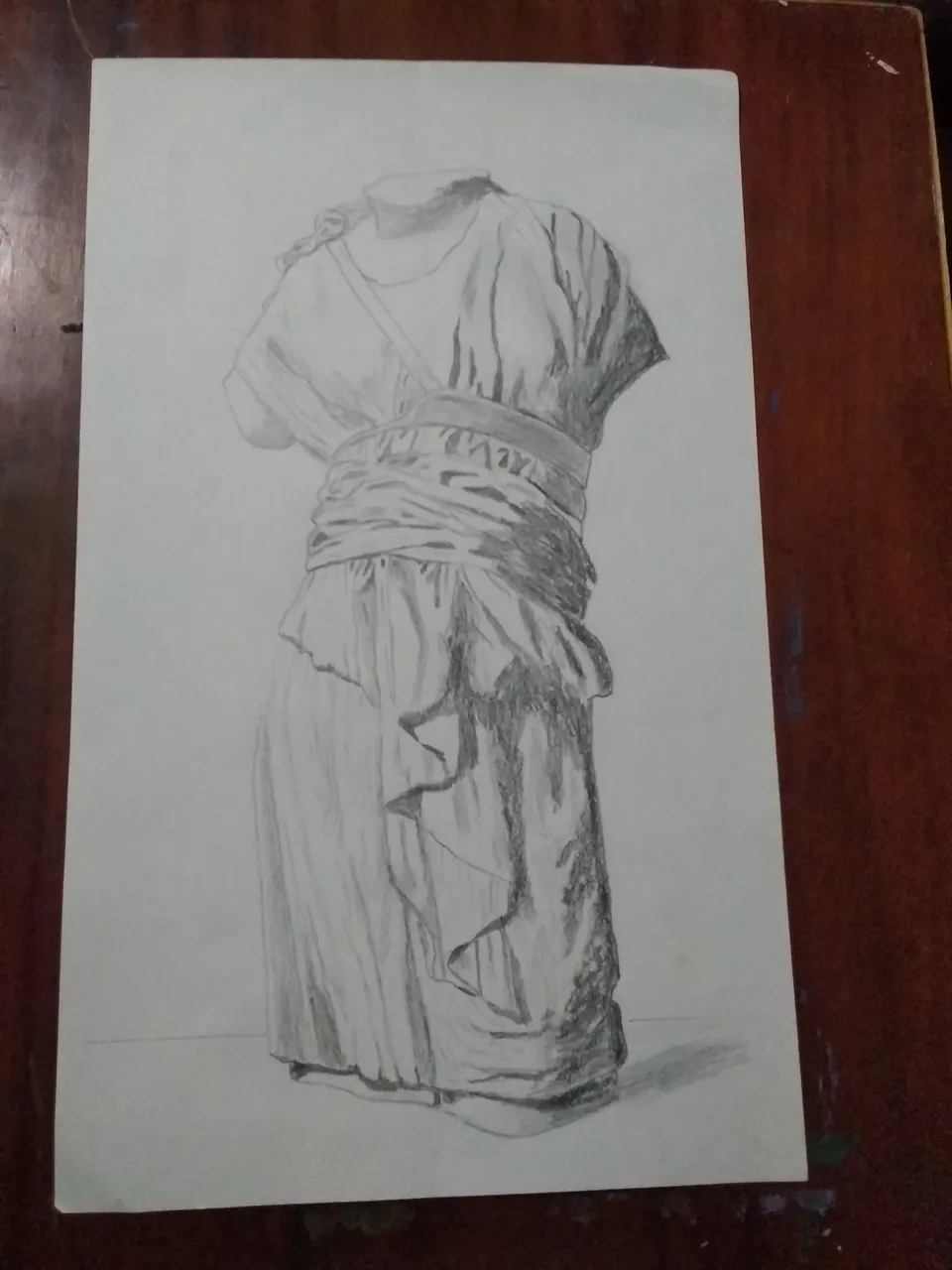
Este es el ejercicio de dibujo número 59 del Curso de dibujo de Charles Bargue. Es una lámina deonde está representada "La amazona del Vaticano". Es un estudio bastante difícil sobre telas, me constó bastante hacerlo, en las fotos que tomé con mi celular pueden ver el resultado. Utilicé también lápices de grafito y trabajé sobre una hoja de tamaño tabloide, de reciclaje.
Bueno, hago esa pregunta inicial porque me llamó la atención mientras la dibujaba. resulta que hay desde hace muchos años una gran polémica por esa cualidad de las amazonas, había una tendencia popular (entre la gente que no sabe griego ni etimología, ni lingüística) a decir que las amazonas se llamaban así porque se cortaban un seno, o se lo quemaban, para tirar mejor con el arco, pero eso no es así, y en el arte siempre se les representa con sus dos senos, incluso con uno descubierto, me imagino que para denotar que era mujer, pero vestida para la guerra.
Resulta que los especialistas del indoeuropeo encontraron una raíz iraní en el nombre, que significa "guerrero", relacionada con la acción de hacer la guerra.
Los griegos las ubicaban geográficaente en varios lugares en asia menor y por el mar negro. Y parece que pueden ser el producto literario griego de muchos pueblos de mujeres guerreras, o pueblos donde las mujeres tenían protagonismo en la guerra. Los griegos de la antigüedad clásica eran muy machistas y por eso las ponían como enemigas de ellos, Herácles (Hércules) mata a una de ellas a la reina Hipólita quien descendía del mismísimo Ares (según una leyenda todas eran hijas de él); al igual que Aquiles, quien mata Pentesilea, pero trágicamente de enamoró de ella mientras luchaban.
Lo cierto es que las amazonas son figuras presentes ya en toda la historia y en muchas culturas. Llegaron a ser incluso seres de culto, con altares y todo en la antigua Grecia. Hasta los españoles al llegar a América pensaron que ellas se encontraban por estas zonas: pues había tribus conformadas solo por mujeres, o tribus donde convivían hombres y mujeres pero estas también cumplían el rol de dirigir acciones bélicas y luchar en promera fila.
En fin, reconocer la historia de las amazonas (las legendarias y las reales) es darse cuenda de que siempre han existido matriarcados, y tribus con mujeres luchadoras, en todas las culturas, desde las antiguas guerreras de las estemas euroasíaticas hasta las que lucharon contra los españoles. Las imposiciones de rol son constructos de las sociedades, es decir, son patrones que se imponen en determinados grupos sociales pero no son una naturaleza universal de los sexos. Las mujeres guerreras están en la historia más antigua de muchos pueblos, y aún existen pueblos con matriarcados que vienen de hace miles de años.
This is drawing exercise number 59 of Charles Bargue's Drawing Course. It is a plate where "The Vatican Amazon" is represented. It is a quite difficult study on robes, it took me a lot of time to do it, in the pictures I took with my cell phone you can see the result. I also used graphite pencils and worked on a tabloid size sheet of recycled paper.
Well, I ask that initial question because it caught my attention while I was drawing it. It turns out that for many years there has been a great controversy about this quality of the Amazons, there was a popular tendency (among people who do not know Greek or etymology, or linguistics) to say that the Amazons were so called because they cut off one breast, or burned it, to shoot better with the bow, but that is not so, and in art they are always represented with both breasts, even with one uncovered, I imagine to denote that it was a woman, but dressed for war.
It turns out that Indo-European specialists found an Iranian root in the name, meaning "warrior", related to the action of making war.
The Greeks placed them geographically in various places in Asia Minor and by the Black Sea. And it seems that they may be the Greek literary product of many peoples of warrior women, or peoples where women had a leading role in warfare. The Greeks of classical antiquity were very macho and therefore put them as enemies of them, Heracles (Hercules) kills one of them to Queen Hippolyta who descended from Ares himself (according to a legend all were daughters of him), as well as Achilles, who kills Penthesilea, but tragically fell in love with her while they were fighting.
The truth is that the Amazons are figures already present throughout history and in many cultures. They even became cult beings, with altars and everything in ancient Greece. Even the Spaniards, when they arrived in America, thought that they were found in these areas: there were tribes made up only of women, or tribes where men and women lived together, but they also played the role of directing warlike actions and fighting in the front line.
In short, to recognize the history of the Amazons (the legendary and the real ones) is to realize that there have always been matriarchies, and tribes with women fighters, in all cultures, from the ancient warriors of the Eurasian eras to those who fought against the Spaniards. Role impositions are constructs of societies, that is, they are patterns that are imposed on certain social groups but are not a universal nature of the sexes. Women warriors are in the earliest history of many peoples, and there are still peoples with matriarchies that go back thousands of years.

